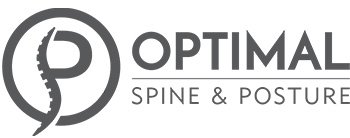
Co-Management With Optimal Spine & Posture
Our goal is to support your treatment and diagnosis while complimenting with our spine correction protocols.
- Objective measures to include posture photos and X-rays to evaluate spine alignment and biomechanics, taken before and after treatment interventions to provide evidence-based comparison reports.
- Diagnostic reports are provided following the initial evaluation and comparison reports are provided post interventions. Instability and impression reports are available upon request. Summary and progress reports are also provided.
- Each treatment plan is prescribed according to the individual’s “anatomical blueprint.” Pelvic morphology and thoracic inlet morphology are evaluated to determine proper sagittal balance and profile for each patient.
Non-Surgical
Non Surgical providers should consider Optimal Spine & Posture Co-management when:
- A patient is not responding to care as expected
- When structural spine correction is needed
Co-management with Optimal Spine & Posture will benefit patients suffering with:
- musculoskeletal pain syndromes
- neuromuscular complications
- scoliosis and hyperkyphosis
- motor vehicle collision injuries
Surgical
Surgical Providers should consider Optimal Spine & Posture Co-Management when:
- a patient is not a surgical candidate or patient refuses surgery
- pre-surgical sagittal or coronal presentation predicts poor surgical outcomes
Co-management with Optimal Spine & Posture for Pre/postoperative care:
- Preoperative “Pre-habilitation” to increase flexibility, reduce fibrosis, and improve sagittal curvature and coronal balance
- Postoperative Rehabilitation to minimize fibrosis, speed healing times, correct remaining postural distortions, and improve sagittal curvatures and coronal balance.
There are multiple Controlled Trials documenting our ability to improve sagittal and coronal plane profiles:
1. The efficacy of lumbar extension traction for sagittal alignment in mechanical low back pain: A randomized trial. Click Here
2. Lumbar lordosis rehabilitation for pain and lumbar segmental motion in chronic mechanical low back pain: a randomized trial. Click Here
3. Increasing the cervical lordosis with chiropractic biophysics seated combined extension-compression and transverse load cervical traction with cervical manipulation: nonrandomized clinical control trial. Click Here
To view a list of the over 130 peer-reviewed papers published by CBP. Click Here
There are multiple studies showing that sagittal balance predicts long term surgical outcomes:
1. Postoperative cervical sagittal imbalance negatively affects outcomes after surgery for cervical spondylotic myelopathy. Click Here
2. The impact of standing regional cervical sagittal alignment on outcomes in posterior cervical fusion surgery. Click Here
3 – Association of preoperative cervical spine alignment with spinal cord magnetic resonance imaging hyperintensity and myelopathy severity: analysis of a series of 124cases. Click Here
